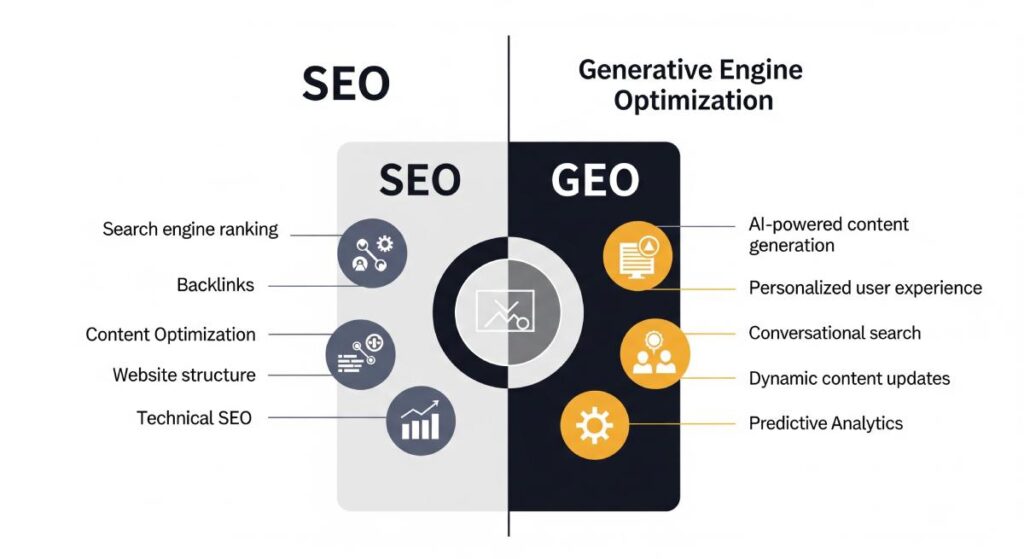Businesses often utilize high-volume broad keywords in order to direct searchers to their websites. Unfortunately, generic keywords with high search volumes do not always convert. Due to fierce competition, it can be challenging to rank for these keywords. In addition, search volume reflects the actual number of searches of a keyword rather than the unique number of people performing the search, meaning fewer people may actually be searching for a specific keyword.
Zero search volume keywords provide businesses with ample opportunity to reach their target audience. According to Search Engine Land, Google has reaffirmed that 15 percent of searches are new. By targeting low search volume traffic keywords, businesses can generate traffic and land more paying customers. Going as far as to target zero search volume phases can be a worthwhile investment as they have less competition and are easier to rank for, leading to higher traffic, conversions and profit.
Gain deeper insight into the viability of low and zero search volume keywords and learn why modern business owners and marketers should consider using these effective SEO practices to help grow an online presence.
Keyword Search Volume – What Is It And Why Is It Important?

By performing a basic keyword search, a user can tell how many times per month, on average, that keyword is searched for in a specific location. Search volume generally refers to the number of searches performed in Google but may also apply to other search engines.
Keyword search volume does not accurately reflect the number of people that search for a particular keyword. Instead, it refers to the number of searches for a certain keyword. For example, if a keyword had a monthly search volume of 200, the keyword could have been searched for by 200 different people or 10 people who searched for the keyword 20 times each. This means that while a keyword may seem to have a high search volume, that might not necessarily be the case.
Why does keyword search volume matter? Because search engines are a common way that websites receive traffic and new visitors. Targeting keywords with a high search volume can prove difficult as businesses are often competing against bigger sites. Targeting low or zero search volume keywords can draw in a targeted audience.
Figure 1.1 is an example of one tool used to find out the volume of a specific keyword. Here we see this keyword has a volume of 52 thousand, meaning 52 thousand people a month search this specific keyword.
What Do Zero Search Volume Keywords Actually Mean?
Google keyword statistics were originally developed to help individuals and businesses that place digital ads gain a better understanding of how certain keywords could drive traffic. Although this is still their intended use, many companies now use ranking systems and metrics to ensure that they will receive adequate traffic to their website by using certain keywords and phrases.
The “competition” score seen when performing keyword research does not refer to how many websites or bloggers are competing for a particular keyword. Instead, competition score refers to how competitive it is to purchase a keyword from another business that is targeting the same keyword. Google defines “competition” as the number of worldwide advertisers that are bidding on a keyword in relation to all keywords across Google.

The truth is that a keyword with zero search volume may not actually have zero searches. According to SEMrush, a keyword that has a search volume of zero actually has less than 10 monthly searches in a particular location. The true search volume of the keyword is usually not zero as people from other cities or countries may be searching for that keyword. While the search volume may still be relatively low, zero search volume also means considerably less competition.
Figure 2.1 demonstrates a keyword that has very low search volume.
Does This Mean that Online Keyword Tools Are Inaccurate?
If zero search volume keywords can indeed generate traffic, does that mean that keyword tools are not accurate? Although it is not a good idea to blindly follow keyword research tools, they can be useful in finding high-volume, low-competition keywords.
It is important to understand that many leading keyword tools, including Google Keyword Tool, are meant for commercial intent searches. These tools do not provide an exact match or information type search queries.
Due to the sheer number of online searches per day, keyword research can often be far off the results given. A study published by Moz revealed that a sample of keywords with around 200,000 monthly searches was off by around 40,000 searches per month.
What Are The Benefits Of Targeting Zero Search Volume Keywords?
When search terms come back with a zero or low search volume, it does not necessarily mean that they will get zero or low searches. Not all keywords are made equal and some zero volume keywords may actually receive zero traffic. To leverage the value of zero and low volume keywords, it is important to approach this method properly. Here is a look at some benefits of targeting zero search volume keywords.
- Zero search volume keywords typically have low competition levels. They give businesses ample opportunity to target topics that are highly relevant to their audience but are not being targeted by competitors.
- Zero search volume keywords are hyper-relevant. Low volume keywords often consist of long-tail keywords that are highly relevant to the target audience, meaning more people who are actually interested in the product or service will visit the web page.
- Zero search volume keywords add diversity to a business’s SEO strategy. Content can successfully rank for a variety of low-volume keywords simultaneously, helping to further increase a website’s traffic potential.
- Zero search volume keywords have stronger commercial intent. This allows businesses to capitalize on specific “buying” keywords that are more likely to draw in customers that want to make a purchase.
- Zero search volume keywords quickly add up. While just one low volume keyword may not seem like much, using several of these keywords can create substantial search interest.
- Zero search volume keywords can provide a great ROI. Low search volume keywords can drive conversions, helping to offset the cost of the content. Many businesses that use zero search volume keywords properly experience a good return on investment.
- Zero search volume keywords generate additional traffic. Websites that need additional traffic can benefit from incorporating zero and low search volume keywords, especially long-tail keywords. The use of long-tail keywords can also result in a lower bounce rate and increase the amount of time that visitors spend on the page.
Tips On How To Target Zero Search Volume Keywords
Not all keywords are worth the effort. It is important to understand how to properly target zero and low search volume keywords to get the best ROI. Follow these tips on how to best identify zero search volume keywords:
1. Find Keywords That Are Considered “Low-Hanging Fruit”
Many businesses start with a list of keywords and some of the keywords may have little to no search volume. However, that does not mean that these keywords are useless. Take the time to go through the list to determine which keywords are “low-hanging fruit,” which means that they get between zero and 200 searches per month.
Low-hanging fruit refers to keywords that businesses can confidently rank for with minimal effort. With these types of keywords, just one conversion is likely sufficient to cover the expense of content creation and optimization. Low-hanging fruit keywords generally have low competition, are highly relevant to the target audience and show a user’s intent to sign up, join or buy a product or service.
2. Try The Alphabet Soup Method To Find Keywords

While looking at the suggested keywords, pay attention to keywords that have an estimated search volume per month of zero. These keywords are most likely to provide the best organic traffic. After performing an initial run in the Google search bar, conduct a second run with that phrase using the same method. Many people will find that the second run tends to have a lower level of competition and is easier to rank.
Figure 4.2 provides an example of niche-related keywords that are relatively low in search volume.
3. Identify Keywords That Are Highly Relevant To The Audience
Zero search volume keywords should always be highly relevant to the target audience. It is typically not worth the cost to target users who are not likely to convert. Some of the best converting keywords are zero or low search volume keywords that connect users with the exact information or products that they want.
When identifying keywords, consider the business’s bandwidth for new customers. Independent contractors or small business owners may only have the bandwidth to take on a couple of new customers a month. These businesses can benefit from targeting a smaller, but more likely to convert, audience.
4. Prioritize ‘Buying’ Keywords To Attract Users Ready To Buy
Most businesses focus on finding keywords that relate to someone of interest to their target audience. Ideally, companies should take one step further by finding keywords that attract users who are ready to buy. This can be achieved by targeting zero search volume keywords that match a buying intent. ‘Buying’ keywords typically include qualifiers like “best deals for…”, “where to buy…” and “discounts for…”.
These types of queries typically tell businesses that users are simply wanting to choose the best option out there and complete a purchase. By publishing excellent copy and implementing zero search volume keywords, businesses can often capture this type of traffic. Be sure to also target commercial keywords that include the brand name or the brands of the products being offered as these keywords tend to be hyper-specific.
5. Build Awareness And Relevancy In A Small Niche
Many businesses make the mistake of using highly competitive keywords, making it nearly impossible to build relevancy in a given industry. Using zero or low search volume keywords can help smaller businesses build relevancy in a small or new niche. This can be especially useful for startups or businesses that are offering products or services that are not easily recognized.
Zero search volume keywords can come in handy when searchers do not know exactly what they need or know that a particular product or service exists. Create content that targets keywords with 100 or below search volumes to build awareness about a particular product or service. Consider targeting these keywords with good on-page SEO, solid content and dedicated pages that help build relevancy.
6. Use Several Zero Search Volume Keywords In A Piece Of Content
Zero search volume keywords ultimately result in fewer visits to a website. For this reason, it is important for businesses to include a variety of zero or low search volume terms within a single piece of content. Incorporating many variations of a single parent term can help businesses maximize their potential for organic traffic.
Just because a primary keyword receives just a few dozen searches each month does not necessarily mean that the keyword’s potential for generating organic traffic cannot be increased. Using variations of a primary keyword can significantly increase the overall amount of traffic that a website receives.
7. Determine If The Cost Is Worth The Reward
Many businesses are on a tight budget and are not able to invest in a large amount of SEO content. Therefore, they need to be careful when choosing keywords to ensure that their investment pays off in the end. Many zero and low search volume keywords are not worth the time or money and should be avoided.
When choosing zero search volume keywords, stick with terms that offer the greatest chance of ranking high, converting users and generating traffic. When poor performing keywords are incorporated into content, it can take many months to pay off if they ever do at all.
8. Test Keywords To Determine If They Are “High Converting”
It can be difficult to determine if a keyword will likely be “high converting” or fail to deliver results. One way to determine if a particular keyword is “high converting” is to test it using paid-per-click (PPC) ads. Start by choosing a product or service that the target audience will most likely be interested in and then identify the zero search volume keyword that best fits the product or offer.
Next, run a small-budget ad campaign on the website’s landing page to see if users convert based on the particular keyword. If the keyword does convert, users can be retargeted using Facebook Ads and similar platforms. Many businesses will discover that some zero and low search volume keywords have higher conversion rates than medium and high search volume keywords.
How To Rank With Zero Or Low Search Volume Keywords
Once a business has identified what keywords are most relevant and likely to generate traffic, it is time to consider how they will rank in the search engines. There are several things that businesses can do to ensure that they rank well with zero volume keywords.
Start by creating link-worthy content. Building links is one of the most common tactics used in search engine optimization (SEO) as links act as a signal to Google that the website is a quality resource that is worthy of being shared. Websites that have more quality backlinks often have higher rankings in the SERPs. There are many types of link-worthy content in which keywords are considered secondary, such as opinion pieces, data, theories, original research and interactive campaigns.
Next, focus on creating content that people want to share. Although the number of shares that a piece receives does not directly correlate with rankings, more awareness can certainly lead to higher traffic. Creating shareable content encourages social conversations, allowing pieces of content to quickly gain momentum on social media platforms. Also, consider getting involved with the local community to find an audience that may have an interest in the product or service being offered. Encourage this community to engage with surveys, polls, podcasts, interviews, case studies, and other published content.

Ranking for zero search volume keywords also requires businesses to continually monitor the performance of their keywords. There are several ways to accomplish this, such as by looking at ad impressions. Simply take the ad impression data for the week and multiply it by four to determine the estimated equivalent of a month’s worth of search volume data. The content performance can then be benchmarked against traditional high-volume keywords. Businesses should also pay attention to Google Search Console (GSC) clicks, impressions and traffic to determine whether the zero volume keywords are leading to clicks or conversions.
Figure 6.1 show the clicks and impressions of one of 321 Web Marketings’ clients over the past 3 months as of January 2022.
What Else To Know About Zero Search Volume Keywords
Google has reported that keywords marked as “low search volume” are associated with minimal search traffic on Google which is an indication that these keywords are not highly relevant to most customer searches.
To prevent these types of keywords from triggering ads, Google temporarily makes low volume keywords inactive. This practice is done by Google in an attempt to stop businesses from mistakenly buying keywords that are likely to yield poor results. According to SEMRush, keywords that show a volume of zero means that the keyword has an average of less than 10 monthly searches in the set location. This means that the true search volume may actually be more than zero in other locations.
When researching zero search volume keywords, keep in mind that keywords that have a high volume also have a high competition. These keywords can be difficult to compete for and often result in minimal traffic. While zero or low volume keywords may result in less traffic, the visitors are often targeted and more likely to make a purchase.
Also, remember that if a keyword is listed on a keyword research tool or in the Google Search Console, it means that the keyword has been searched before. Keywords that have never been used will not typically show up on a list. While the search volume of a particular keyword may be low, it is not truly zero. Certain factors like trends or seasonal searches may influence a keyword’s search volume at any particular time.
 There are many important aspects of keyword research, meaning businesses should not base their entire SEO research strategy on keyword search volume alone. When a target audience continually looks for a particular answer, this is a clear indication that it has some value. Pay attention to other indications that a keyword has value, such as when Google suggests a particular keyword, when people are directly searching for a question or when a keyword appears in the “related searches” section on Google.
There are many important aspects of keyword research, meaning businesses should not base their entire SEO research strategy on keyword search volume alone. When a target audience continually looks for a particular answer, this is a clear indication that it has some value. Pay attention to other indications that a keyword has value, such as when Google suggests a particular keyword, when people are directly searching for a question or when a keyword appears in the “related searches” section on Google.
Keyword search volume can change at any time and often without notice. The search volume of a keyword may be zero this year but could skyrocket next year when a particular trend or product arises. If a business should anticipate that people will be searching for that keyword in the future or if the topic is currently trending among the business’s target audience, take the time to create content that will likely get ranked in the search engines.
Finally, businesses should incorporate zero and low search volume keywords into their content but not only zero volume keywords. When it comes to SEO, it is essential to diversify by including a mix of keywords with varying search volumes. It can be difficult to navigate zero search volume keywords as they do not always behave as one would expect. Type a keyword into Google and see what shows up on the first page to determine what level of competition to expect. Pay attention to aspects like website authority to gauge whether a zero search volume keyword is worth the time and effort.
Schedule A Free Consultation With 321 Web Marketing
Despite the name, zero search volume keywords can actually generate a lot of traffic. Keyword research tools are notorious for being inaccurate when estimating search volume as most of these tools pull their data from the Google Adwords Keyword Tool or clickstream data which typically only returns data for commercial intent queries and not information or exact-match queries. To learn more about how to find zero search volume keywords that generate traffic or to schedule a free consultation with an experienced Virginia SEO marketing company, contact 321 Web Marketing.








